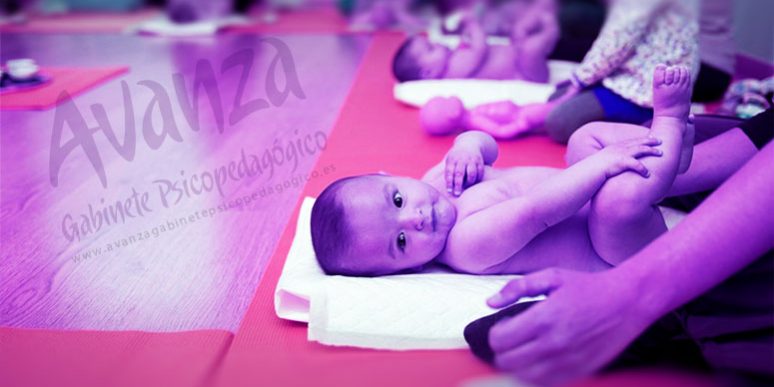At Avanza Gabinete Psicopedagogico, we have the following infant massages to try or learn, since they can be done both individually (from the center to your baby), or in a group of 4 babies with their parents, where the different problems with those that parents will encounter from the birth of the child, as well as the way to relieve mutual stress, both for the baby and for the parents.
COURSE CONTENT
The infant massage letter would be:
INFANT COLIC
Infant colic is a pattern of prolonged, sometimes inconsolable crying, which begins around the second week of life, repeating itself almost daily or daily, and which can persist until the third or fourth month.
Infant colic are painful contractions of the abdomen that the baby and the mother suffer during the first 12 weeks of the child's life. And we say about the mother because, to the changes of motherhood, we must add the feeling of helplessness that invades many mothers when faced with the excessive and inconsolable crying of their newborn.
Clinical features
- The baby will have a lack of responses to calming stimuli.
- The baby will not have diarrhea or any additional gastrointestinal symptoms.
- The newborn will draw up his legs while crying and his redness will increase, expressing nervousness and clenching his fists.
- The baby's belly will be hard
- The baby will be agitated, feeling upset, restless and irritable.
- The baby will have difficulty falling asleep and will not have a very deep sleep and will easily wake up.
- The newborn will cry for long periods of time.
- Infant colic usually has a sudden onset and at the same time of day, predominantly from 6 to 24 hours.
- The child will have difficulty expelling gas and passing stool.
Therapeutic plan
It is very important to approach the family, reassure parents and eat a good diet.
Parents will be taught massage techniques to reduce symptoms
Techniques to relax the viscera will be performed during the session.
In a few sessions you will notice a great improvement in your baby and you will be able to rest and sleep peacefully.
CONGENITAL TORTICOLIS
It is an inclination or vicious attitude of the head and neck for different reasons. Congenital muscular torticulis is a relatively common neck deformity that occurs in newborns and is associated with a shortening of the sternocleidomastoid muscle.
The mother or father may notice that the child always has his head tilted to the same side and has difficulty turning it to the other side; sometimes a small lump is noticed at the level of the injured muscle. The child often presents facial asymmetry with discrete flattening of the affected side, which in some cases can persist if not treated.
Congenital muscular torticulis is associated with congenital hip dislocation, which is why it is important to perform a thorough examination of the hip, performing an ultrasound
Treatment plan
It is very important to treat muscular torticollis from the first moment, so that it does not establish itself and make it more difficult to reach a normal head position.
Treat the vertebrae with simple exercises in the room and at home several times a day.
Stretching and massage of the sternocleidomastoid muscle, and other associated muscles such as the angular muscles, scalenes and trapezius.
Treat the joints into which the sternocleidomastoid is inserted, so that it can move as best as possible.
In addition, postural change exercises will be done to improve playing in a prone position, rolling, crawling... We will play ball games.
MASSAGE TO REMOVE MUCUS
Autogenic drainage is a technique to help remove mucous secretions from the airways. Combined movements of the abdomen and rib cage occur. It is an easy and simple technique to apply at home.
Autogenic drainage should be applied before a meal or one hour after a meal. This can last anywhere from 20 minutes to an hour and can be repeated several times a day.
Parents in the room will be taught what the technique is like and will notice how their baby mobilizes their mucus quickly. Added to this is a good nasal wash in which the best technique will be explained in the room.
Intervention plan
To improve breathing and movement of the rib cage, the following will be done:
- Autogenous drainage
- Rib mobilization
- Diaphragm inhibition
GOALS
- The main objective of the course is to help intensify the emotional bond between the baby and its caregivers, so it is not necessary to have prior knowledge of massage.
- Teach parents to massage their children.
- Inform about the benefits that massage has for babies on a biological, psychological, emotional and social level.
- Create a meeting space where you can find answers to issues that concern fathers and mothers (colic, crying, jealousy, sleep,...)
- Help families communicate emotionally with the baby through tonic language.
- Reduce postpartum depression.
- Offer the baby a space where he can show himself as what he is: a subject with full rights, deciding the moments of the massage himself.



